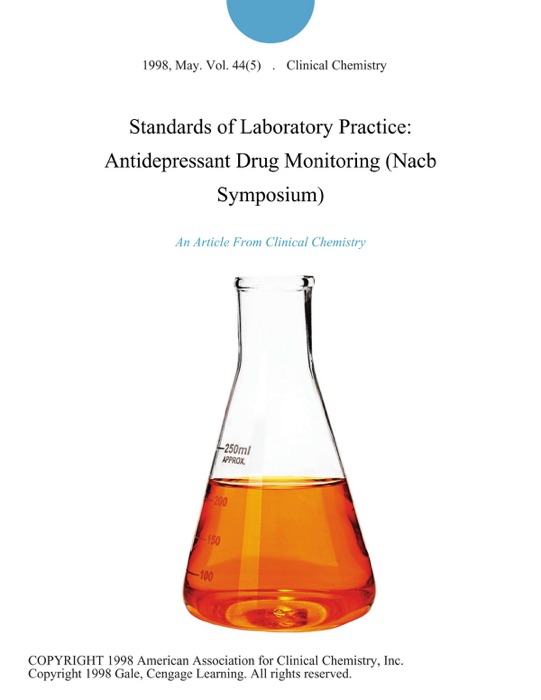(Download) "Standards of Laboratory Practice: Antidepressant Drug Monitoring (Nacb Symposium)" by Clinical Chemistry # eBook PDF Kindle ePub Free

eBook details
- Title: Standards of Laboratory Practice: Antidepressant Drug Monitoring (Nacb Symposium)
- Author : Clinical Chemistry
- Release Date : January 01, 1998
- Genre: Chemistry,Books,Science & Nature,
- Pages : * pages
- Size : 236 KB
Description
Depression is a common and major psychiatric disorder affecting as many as 20% of individuals within their lifetime and occurring almost twice as frequently in women as in men (1, 2). The diagnosis of major depression can be defined as persistently depressed mood and markedly diminished interest or pleasure in all or most activities for at least 2 weeks in combination with at least three of the following symptoms: significant change in weight or appetite, sleep disturbances, feeling or being restless or very slowed down, fatigue, feelings of worthlessness, inability to concentrate and make decisions, and recurrent thoughts of death or suicide (3). A wide variety of pharmaceuticals are available for treating depression, including tricyclic antidepressants (TCAs) [3], atypical antidepressants, monoamine oxidase inhibitors, selective serotonin-reuptake inhibitors, and lithium. A list of antidepressant medications is included in Table 1. Although clearly defined therapeutic ranges have not been established for the majority of antidepressant medications, therapeutic drug monitoring for certain TCAs and lithium has been well documented to improve the use of these agents for therapeutic management of depression or mood stabilization and has become the "standard of care" in psychiatry. The relationship between TCA dose and antidepressant response is poorly delineated, in part because of the wide range of inter-individual variability in metabolism and elimination. Fewer than 40-50% of patients treated with standard doses of TCAs will achieve optimal plasma concentrations. The antidepressant response to therapy with TCAs and lithium is improved two- to three-fold with the application of appropriate therapeutic drug monitoring (4). Improved response rates translate into improved safety and cost-effectiveness of antidepressant therapy (5). The poor dose-response relationship and narrow therapeutic index of the TCAs and lithium make these drugs excellent candidates for improved therapeutic efficacy through therapeutic drug monitoring. As a result of intensive work illustrating the benefits of therapeutic drug monitoring (TDM) of antidepressant medications, the American Psychiatric Association task force on the use of laboratory tests in psychiatry recommended the clinical use of monitoring plasma concentrations of the TCAs imipramine, desipramine, and nortriptyline (6). Therapeutic monitoring of amitriptyline is also accepted, based in part on its metabolism to nortriptyline. Additionally, evidence for plasma concentration vs response relationships for doxepin (7), clomipramine (8, 9), and bupropion (10,11) has been reported. Therapeutic ranges for the antidepressants maprotiline, amoxapine, trazodone, and alprazolam have also been suggested (7,12). However, no general consensus has been achieved.
Post a Comment for "(Download) "Standards of Laboratory Practice: Antidepressant Drug Monitoring (Nacb Symposium)" by Clinical Chemistry # eBook PDF Kindle ePub Free"